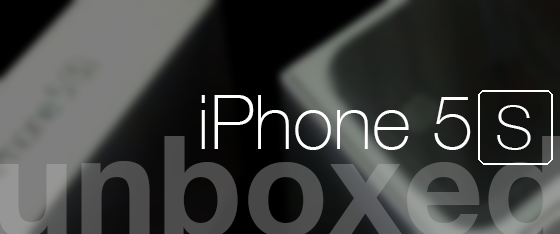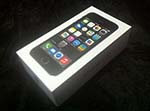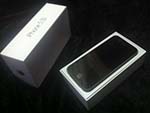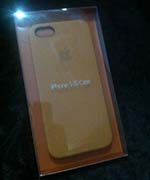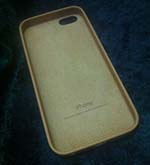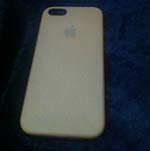I had a difficult time choosing a phone this generation - more on that later… but for now, suffice it to say I wound up going with an iPhone 5s in “I refuse to call it space” gray, Verizon, 64 gig. Behold the obligatory unboxing photos below (sorry for the crappy photos– they were taken with my ancient iPhone 4 that I use for testing purposes because I traded in my iPhone 4S.) That’s right, I skipped the iPhone 5, so this is a big upgrade for me - bigger screen, dramatically better camera, etc. (My wife has an iPhone 5, so I’m familiar with it and was able to compare.)
As you can see from the pictures, I wound up getting a tan leather case, which I actually really like. The case adds so little to the thickness that it’s still the same as the 4S it replaced, it feels great in the hand, and it should protect the phone from scratches reasonably well. The video down below is a bit better than the pictures.
Quick Review of the iPhone 5s
So, the obvious question is “what do you think of the iPhone 5s?” It exceeded my expectations, mostly because of the second-best camera available in a phone today.
Better Camera, but the real news is mostly software.
The biggest upgrade here, at least today, is the camera. Compared to the iPhone 5, it’s a relatively minor upgrade. The low-light performance is a bit better (less grainy, less prone to motion blur.) The flash is significantly better, but I don’t really use flashes (and it’s not quite good enough to change that.) However, compared to the iPhone 4S that I’m replacing, it’s practically night and day. So, while it’s definitely not the best camera phone on the market (see: Nokia 1020) it’s probably the second-best. It’s better than any phone I tested other than the 1020 (which, again, is just stupidly good.)
However, the real news here isn’t the minor increase in optics and sensor quality. It’s the speed of the camera, and how they’ve leveraged that speed. Burst mode (hold down the shutter button, and it continues taking photos ten times per second) is a HUGE feature for a camera phone. While common on higher end cameras, I’ve never seen this done on a camera phone, at least not with this kind of speed. It will be great for action shots, but it will also do a lot to allow you to capture pictures in low light. I think this is the big underestimated feature of the iPhone 5s, and it alone makes the camera update huge. It can also do slow-motion video (120fps) which is a fun novelty that demos well, but it won’t be used as frequently as burst mode.
Even when you’re not using burst mode, the iPhone pretty much always takes 4 pictures and blends them together into a single usable photo that minimizes motion blur, grain, etc. It works surprisingly well in the little bit of testing I’ve been able to do, and more importantly, it’s transparent to the user.
Fingerprint reader: a gimmick that works.
I’ve already written up my thoughts on fingerprint readers on phones. The short version: I’m for it– fingerprints are not secure enough to be used alone for truly sensitive data - indeed, it’s very difficult to change your “password” once it’s been compromised… because you left it on a wine glass. However, a fingerprint reader that’s not easily spoofed is dramatically better than the 4-digit numeric password I was previously using on my phone. (The fingerprint reader on the iPhone WILL be spoofed… but probably not trivially. It remains to be seen how difficult it is, but based on the AuthenTec technology Apple bought last year, I expect it to be pretty difficult for a layperson to fool.)
However, in practice, it’s very well executed. The configuration/training process is exactly as easy as you would expect Apple to make it. The fingerprint reader has worked for me literally 100% of the time, even with me trying to screw it up a bit. And almost as important as works-every-time reliability is speed: it’s dramatically faster than fingerprint readers I’ve used in the past. It’s a split second - too short to time. If I were to guess, I’d say around 300 milliseconds. Excellent, and useful. Is it a gimmick? Probably. But it’s a useful gimmick.
Faster, 64 bit processor will be interesting, but isn’t yet.
I could go into the A7’s performance characteristics, but I won’t. Anandtech did a better job than I could ever do in their phenomenal review. However, I will say a few quick things:
-
The benchmarks pretty much concur with Apple’s ambitious statements about being “twice as fast as the iPhone 5.”
-
You won’t notice it at all compared to the 5… YET. All apps in the store were developed with the iPhone 5 in mind as the top-of-the-line phone, so there aren’t really any apps that “feel” slow on the 5. Wait a year, and you’ll be able to tell the difference.
-
Moving to 64 bit was smart, contrary to popular opinion. Yes, 64 bit is mostly about addressing more RAM, and the iPhone is nowhere near the memory limits of a 32 bit address space. However, what’s more compelling here is the ARM8 instruction set. Just recompiling to the new instruction set will result in a non-trivial performance improvement for any real-world app. Yes, Apple could have implemented ARM8 without going 64 bit, but why transition twice? In a couple years when they start running into a memory ceiling they will have already transitioned. It’s a smart move.
Bottom line, even though in the long run the A7 is the big news, today it’s kind of ho-hum because there’s no software to take advantage of the new-found performance.
Should you upgrade? Easy choice.
This is actually the easiest question to answer. If you’re sticking with iOS, deciding whether or not to upgrade to the 5s is really quite easy to my mind.
- Do you have an iPhone 5? Don’t upgrade.
- Do you have an earlier iPhone? (4S, 4, 3GS, etc.) The 5s is a great choice, but make sure you really want to stick with iOS first.
- What about the 5c? Unless you’re in love with the color (and by the way, I played with some today– they look and feel great) don’t bother with the 5c. The 5s is worth the extra $100 - don’t bother with the 5c.
The Difficult Choice: Platform
So why was it a hard choice? Because the competition has gotten so good.
Windows Phone is the better and more innovative OS, and the Nokia 1020 has the best camera available on any phone by a huge margin. However, it has a catastrophically bad app ecosystem. After trying a 1020 for a week, I was left incredibly impressed by Windows Phone, and even more impressed by Nokia’s excellent hardware. However, the app store was so bad that it ultimately wound up being a non-starter for me. Many top-tier apps are in the Windows Phone store, but don’t be deceived– they are often a generation or two behind the same app on iOS and Android. Evernote is a great example - it’s equivalent to what they had available on iOS and Android a couple years ago, no new features are there. However, a lot of apps that I use every day are just not even available– often not even in the form of cheap knock-offs. For example, my Jawbone UP device, my Philips Hue lightbulbs, and my Withings scale would be useless without their apps. It’s too bad, because the camera on the 1020 is so good that it’s hard to even explain. It’s not that the iPhone 5s isn’t in the same ballpark, it’s not playing the same sport. The Nokia 1020’s camera has more in common with a DSLR than it does with an iPhone 5s in terms of quality, manual adjustments, and versatility. That’s not hyperbole– it really is that good.
Android device manufacturers, as a factor of sheer volume, have largely out-innovated Apple on the hardware side, and the OS has caught up in pretty much every way, and surpassed in some areas. The app store on Android is a mixed bag - just as much quantity, and high profile apps tend to be just as good as their iOS brethren… but you have to sift through a lot more garbage (often including intentionally deceptive apps with similar names and icons) to find them. While there is a lot of talk about security and malware on Android, for the most part it’s bullshit: these issues exist, but not if you leave your phone in a locked down, non-rooted state. (Of course, that means giving up one of the biggest differentiators of Android.) However, after testing it for a few days, I found that the device I like the best (Galaxy Note 3) is too large to fit in my jean pocket, and has tons of shovelware courtesy of Samsung. My second-favorite phone (the excellent Moto X) is too small to differentiate from the iPhone and has a horrible camera. (It’s somewhere between the iPhone 4 and 4S in quality– nowhere near the 5s, and it’s an insult to cameras everywhere to compare it to the Nokia.)
In the end…
Ultimately, I wound up buying the iPhone 5s because it was the best blend of compromises for me and my specific use today. The camera isn’t as good as the Nokia, but it really is quite good– a bigger improvement from the iPhone 5 than I expected. I wish the screen were larger, like some of its Android competition, but none of the Android devices I looked at really spoke to me… so while I do think that Android has caught up on OS to a point where it’s a wash, and they are innovating more and have greater diversity on the hardware side, I didn’t fall in love with anything.

